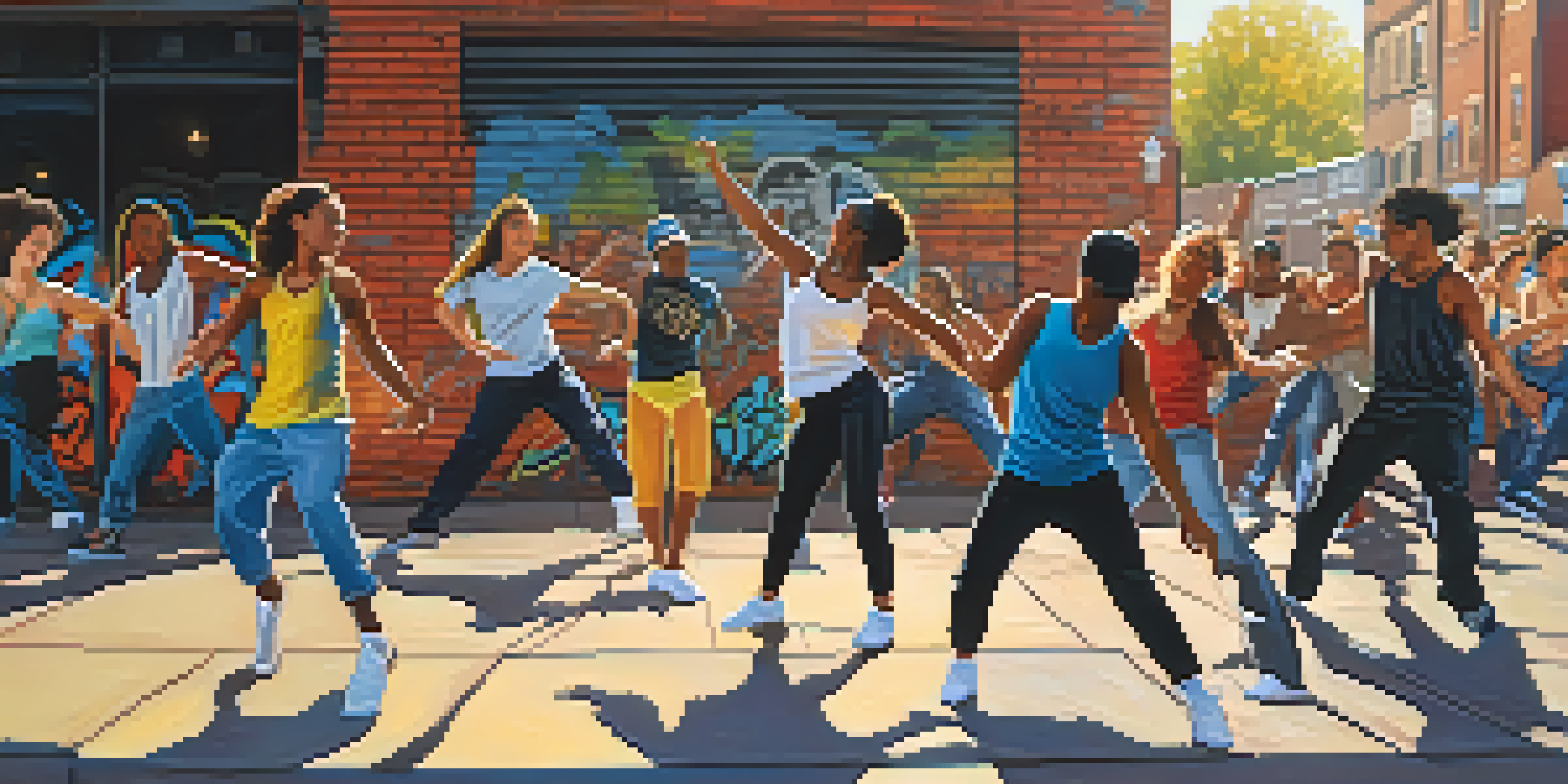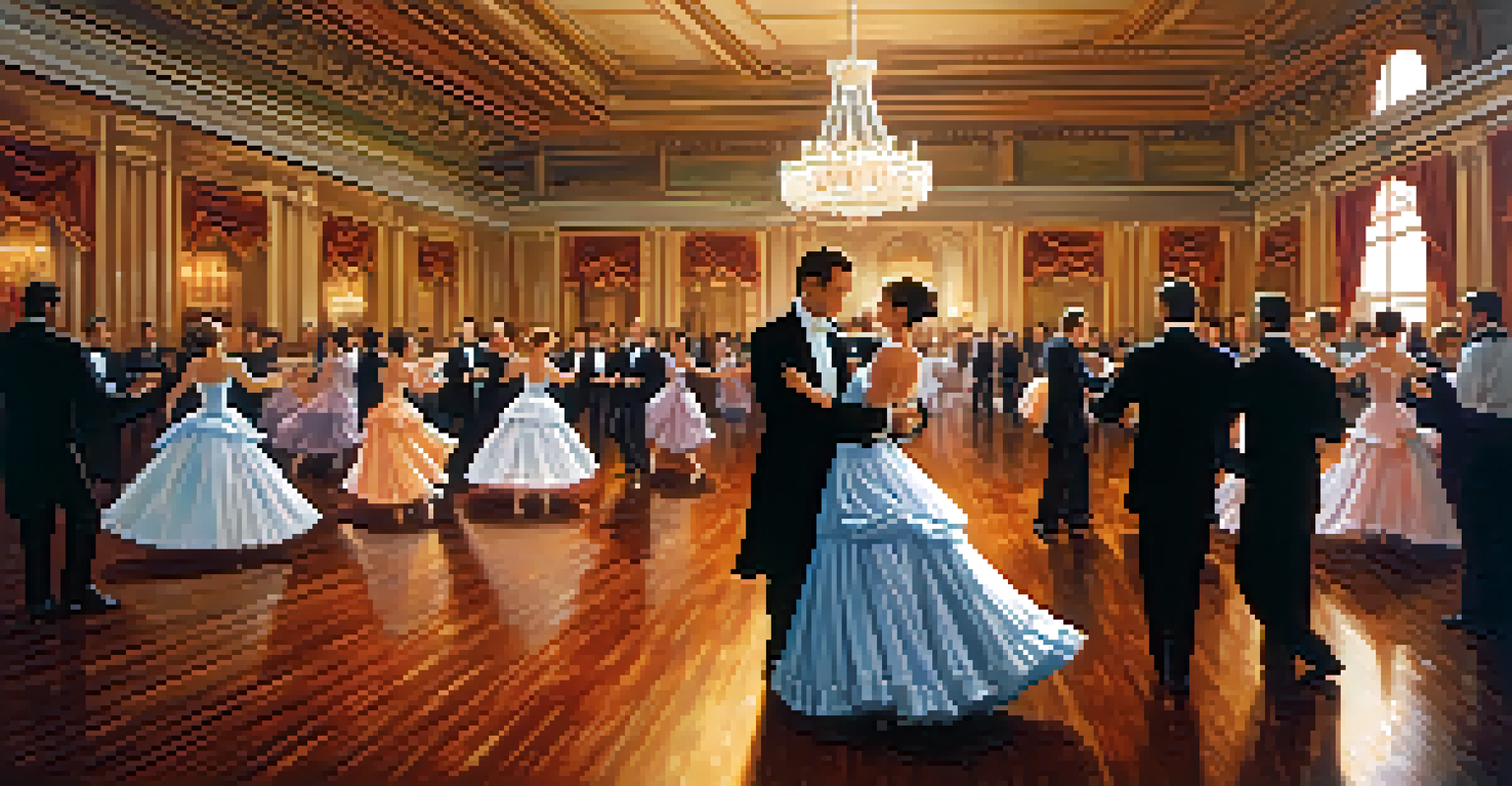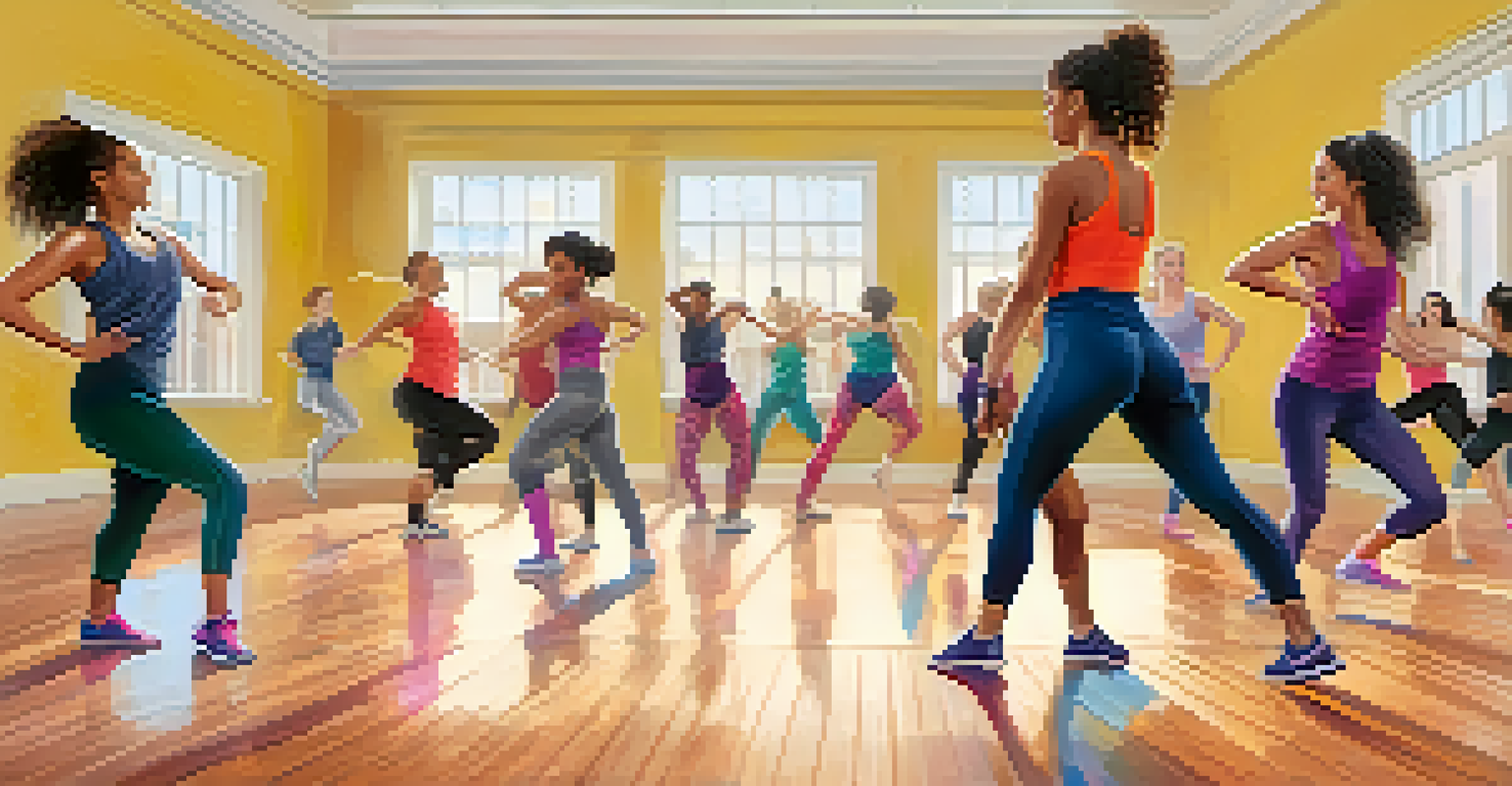The Evolution of Social Dance: From Ballrooms to Streets Today

The Origins of Social Dance: A Historical Perspective
Social dance has roots that can be traced back to ancient civilizations, where it served as a form of storytelling and celebration. In these early societies, dance was often tied to rituals and communal gatherings, reflecting cultural values and traditions. As societies evolved, so did their dance forms, leading to the emergence of structured styles in the Renaissance period.
Dance is the hidden language of the soul.
During the Renaissance, dance became more formalized with the rise of ballrooms in Europe. These grand spaces allowed people of different social classes to mingle, fostering a sense of community through shared rhythm and movement. The intricate dance steps of the time, such as the minuet and the gavotte, were not just about the dance itself but also about social etiquette and status.
As we moved into the 19th century, social dance began to flourish even more with the introduction of the waltz and the polka. These dances broke away from rigid forms, inviting spontaneity and personal expression, which laid the groundwork for the more liberated dance styles we see today.
The Ballroom Era: Elegance and Structure in Dance
The ballroom era was characterized by its elegance and the structured nature of its dances. Couples would glide across polished floors, showcasing their skills in dances like the foxtrot and the tango. This period emphasized not just the dance steps but also the importance of dress, decorum, and the art of leading and following.

Ballroom dancing was seen as a social necessity, particularly in high society, where it offered a chance to showcase one's status and refinement. This setting allowed for intricate choreography and a focus on partnership dynamics, making each performance a visual delight. The connection between partners was paramount, often mirrored by the music that accompanied them.
Dance Reflects Cultural Evolution
Social dance has transformed through history, evolving from ancient rituals to modern forms that celebrate individuality and community.
However, as the world changed with social movements and technological advancements, the appeal of ballroom dancing began to shift. The rigid structures that once defined social interactions started to give way to new forms of expression, paving the way for more casual and diverse dance styles.
The Birth of Jazz and Swing: A Cultural Shift
The early 20th century saw a cultural renaissance that brought jazz and swing to the forefront of social dance. These lively, improvisational styles reflected the dynamic spirit of the time, encouraging dancers to express their individuality. The jazz age not only reshaped music but also transformed how people interacted on the dance floor.
Dancing is creating a sculpture that is visible only for a moment.
Dances like the Charleston and the Lindy Hop became symbols of freedom and rebellion, breaking away from the constraints of formal ballroom traditions. Social dance halls buzzed with energy as people embraced these new rhythms, often leading to the creation of dance competitions that celebrated creativity and flair. This era was all about fun and connection, with dance as a form of self-expression.
The spirit of jazz and swing influenced many other dance styles, leading to the emergence of rock and roll in the 1950s. This evolution marked a significant departure from the past, as the music became more accessible and the dance styles more diverse, ushering in a new era of social dance that was less about formality and more about enjoyment.
The Rise of Street Dance: Urban Culture Takes Center Stage
As the 1970s and 1980s rolled in, street dance emerged as a powerful expression of urban culture. Influenced by hip-hop music and the vibrancy of city life, styles like breakdancing and locking became popular forms of social dance. These styles were not just about movement; they embodied a sense of community and identity among dancers.
Street dance brought the dance floor to the streets, turning sidewalks and parks into performance spaces. This democratization of dance allowed anyone to participate, breaking down barriers that once existed in structured dance environments. It was a grassroots movement that emphasized creativity, spontaneity, and the importance of being true to oneself.
Street Dance: A Community Movement
The rise of street dance in the 1970s and 1980s democratized dance, emphasizing creativity and identity within urban culture.
The rise of street dance also introduced new elements like battles, where dancers would showcase their skills in friendly competition. This aspect fostered camaraderie while pushing individuals to innovate and improve, making social dance a dynamic and ever-evolving form of art.
The Influence of Technology on Social Dance
With the advent of technology, social dance has undergone yet another transformation. The rise of social media platforms, like TikTok and Instagram, has allowed dancers to share their moves with a global audience, creating viral dance challenges that can captivate millions. This phenomenon has made dance more accessible than ever, encouraging people to participate from the comfort of their homes.
Online tutorials and dance classes have also proliferated, providing opportunities for anyone to learn new styles or refine their skills. The ability to connect with instructors and fellow dancers around the world has broadened perspectives on dance, blending various cultural influences into new hybrid forms. Technology has truly made the world a smaller place for dancers.
However, this digital age also raises questions about authenticity and the nature of social connection in dance. While technology can enhance the experience, it’s essential to remember the roots of social dance—community, connection, and shared joy—elements that thrive best in person, on a dance floor, or even in the streets.
Contemporary Social Dance: Diversity and Inclusivity
Today, social dance is more diverse and inclusive than ever before. Styles such as salsa, bachata, and even K-pop dance have found their place in social settings, reflecting the melting pot of cultures we live in. This blending of styles encourages dancers to explore and celebrate differences, fostering a deeper appreciation for global dance traditions.
Moreover, contemporary social dance embraces inclusivity, welcoming people of all ages, abilities, and backgrounds. Dance studios and community organizations are increasingly offering adaptive dance classes, ensuring that everyone can enjoy the benefits of dance, regardless of their physical capabilities. This shift towards inclusivity is crucial in breaking down stereotypes and fostering a sense of belonging.
Future of Dance: Trends and Tech
The future of social dance promises innovation through technology and trends that merge fitness and social interaction.
The community aspect remains strong, with social dance events and festivals bringing people together to celebrate their love for movement. Whether it’s a local salsa night or a flash mob in the park, these gatherings serve as a reminder that dance continues to be a powerful medium for connection and expression.
The Future of Social Dance: Trends and Innovations
Looking ahead, the future of social dance is filled with exciting possibilities. As new music genres emerge and cultural trends shift, dance will undoubtedly continue to evolve, reflecting the changing dynamics of society. Innovations in technology, such as virtual reality dance experiences, may also redefine how we engage with dance in the future.
Additionally, the rising popularity of dance fitness classes, like Zumba or dance cardio, highlights a growing trend towards combining social dance with health and wellness. These classes not only promote physical fitness but also create a fun, social environment where participants can connect through movement, demonstrating that dance is about more than just steps.

Ultimately, the future of social dance will likely be shaped by the very people who participate in it. As individuals continue to express themselves and connect with others through dance, we can anticipate a vibrant landscape that honors the rich history of social dance while embracing new trends and innovations.